|

 Up
Up 
 Pilots,
Pilots,
Planes
and Pioneers

(You are here.)
 Down
Down




  Need
to Need
to
find your
bearings?
Try
these
navigation aids:
If
this is your first
visit, please stop by:
Something
to share?
Please:



|
|
Available in Française, Español, Português, Deutsch, Россию,
中文,
日本, and others.
 hile
the Wright brothers may have been the first to make a sustained,
controlled flight, they were just two among hundreds of brave men
and women who helped to give the world its wings during the earliest
days of aviation. Their Flyer was but one of many historically
important aircraft. Below are brief descriptions and photos of some
of the most important people and planes, and where available
resources and links where you can find more information. In some
cases, contributors have supplied expanded
histories and biographies. Those are listed at the right and linked below. hile
the Wright brothers may have been the first to make a sustained,
controlled flight, they were just two among hundreds of brave men
and women who helped to give the world its wings during the earliest
days of aviation. Their Flyer was but one of many historically
important aircraft. Below are brief descriptions and photos of some
of the most important people and planes, and where available
resources and links where you can find more information. In some
cases, contributors have supplied expanded
histories and biographies. Those are listed at the right and linked below.
A
 B
B
 C
C
 D
D
 E
E
 F
F
 G
G
 H
H
 I
I
 J
J
 K
K
 L
L
 M
M
N
 O
O
 P
P
 Q
Q
 R
R
 S
S
 T
T
 U
U
 V
V
 W
W
 X
X
 Y
Y
 Z
Z
|
|
|
Albert F. Zahm built the first scientific wind tunnel in
America in 1901 at Catholic University, where he was a professor of
mathematics and engineering. It was 40 feet (12.2 meters) long and 6
feet (1.8 meters) square, and probably predated the Wright's 6-foot
(1.8 meters) wind tunnel by several months. With this tunnel he made
several significant discoveries concerning air friction that led to
the standard cigar-shaped fuselage still employed by aircraft
designers. He was one of the founding members of the Aero Club of
America and in 1906. helped convince the Club to endorse the Wright
brothers and their work. From 1910 through 1913, Zahm served as an
expert witness for Curtiss in the patent suits the Wrights had filed
against him. In 1913-1914, he was contracted by the Smithsonian to
reopen and run the Langley Aerodynamical Laboratory and helped
to create a national laboratory for aeronautical research. The
National Advisory Council on Aeronautics (NACA, later NASA) was
partly due to his efforts. In 1914-1915, he worked briefly as the chief
engineer for the Curtiss Aeroplane and Motor Company, then managed the U.S. Navy's aerodynamics lab from 1916 to
1929. In 1929, he was offered the "Guggenheim Chair" at the
Library of Congress and ran their aeronautical division until he
retired in 1946. Although his contributions to pioneer aviation
were many and notable, unfortunately he is best remembered for his
antagonistic relationship with the Wright brothers. In addition to
helping Curtiss in the "patent
wars," he also directed the rebuilding of the 1903 Langley
Aerodrome in 1914 and wrote the 1914 Smithsonian report declaring the 1903 Langely Aerodrome to be the first airplane "capable" of
flight. In later years, he was involved with Stella Randolf in her
effort to promote
Gustave Whitehead as the first to fly successfully. For an
expanded history of the Langley Aerodrome and and Zahm's part in
the 1914-1915 test flights, see
The Wright/Smithsonian Controversy.
|
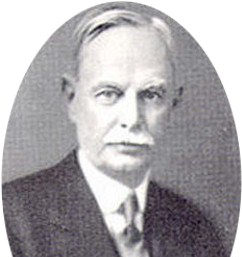
Albert Francis Zahm.
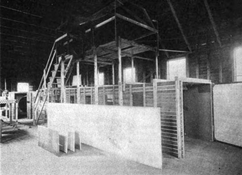
Zahm's 1901 wind tunnel at Catholic University was capable of
generating an airstream up to 25 mph (40 kph).
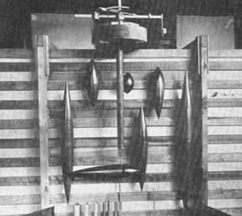
Some of the shapes tested by Zahm in his tunnel during his studies
on skin friction.
|

Zahm in a "headless" Curtiss Model D. Note that the head (front
elevator) has only recently been removed. The supports for it are
still in place.
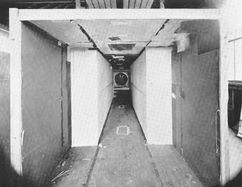
The interior of the wind tunnel at Catholic University.
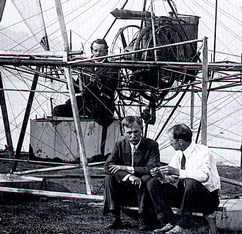
Albert Zahm (middle, seated) talks with Glenn Curtiss in front of
the Langley Aerodrome after it was rebuilt in 1914.
Charles
Manly is in the cockpit.
|

